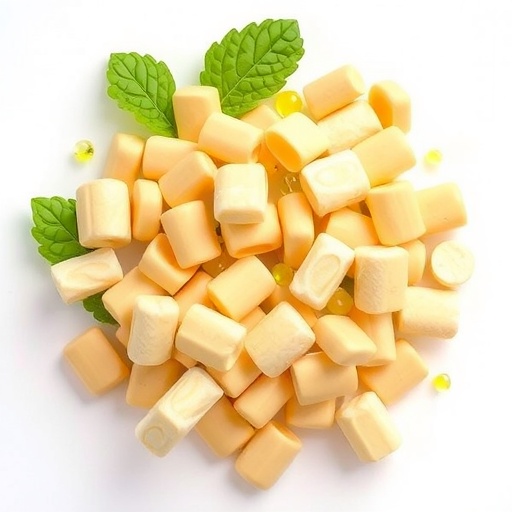In a groundbreaking study published in BMC Complementary Medicine and Therapies, researchers led by Wang et al. have delved into the complex world of herb-drug interactions, specifically focusing on Astragali Radix, a popular traditional Chinese medicinal herb renowned for its myriad health benefits. This investigation, which incorporates both in vitro methodologies and pharmacokinetic assessments, unveils a fascinating interplay between herbal extracts and conventional pharmaceutical drugs. These interactions hold significant implications for safe therapeutic practices and underscore the necessity for increased awareness among healthcare providers and patients alike.
One of the primary objectives of this research was to elucidate the mechanisms underlying the herb-drug interactions involving Astragali Radix. The study meticulously designed experiments that simulate physiological conditions, allowing researchers to observe how the constituents of the herb affect the metabolism and efficacy of certain prescribed medications. By employing in vitro incubation techniques, the team was able to isolate factors that influence drug bioavailability and efficacy, thereby contributing to a deeper understanding of potential risks associated with simultaneous herbal and pharmaceutical consumption.
The study highlights the fact that many patients often do not disclose their use of herbal supplements to their healthcare providers, which can lead to unforeseen complications. The integration of Astragali Radix with certain drugs may modify therapeutic outcomes, potentially resulting in diminished drug efficacy or increased side effects. This educational component is crucial, as it addresses the gap in knowledge that exists not only among patients but also among clinicians regarding the significance of herbal supplements in conjunction with prescribed medication regimens.
One exciting aspect of the research is its focus on pharmacokinetics, which examines how drugs move through the body over time. The authors’ investigations reveal that certain compounds in Astragali Radix can significantly alter the metabolism of pharmacologically active substances. This finding is particularly pertinent given the increasing prevalence of herbal usage among populations seeking alternative treatments. The research is a call to action for broader investigations into how widespread herbal practices may influence conventional medical outcomes, reinforcing the need for comprehensive education in both practitioners and patients.
Further dissecting the specific herb-drug interactions examined, the study identifies several key active ingredients within Astragali Radix, such as astragaloside IV and flavonoids. These components have been shown to interact with enzymes critical to drug metabolism, particularly in the liver. For instance, the results suggested that certain enzymes responsible for metabolizing medications could be inhibited or induced by these herbal constituents, which would subsequently enhance or reduce the bioavailability of conventional drugs. This highlights the dual nature of such interactions; on one hand, these herbs may offer therapeutic benefits, while on the other hand, they pose significant risks if not carefully monitored.
The research methodology adopted by the team involved creating conditions that mirror the human biological environment to enhance the relevance of their findings. Employing human liver microsomes and specific cell lines, the researchers could observe the real-time effects of various concentrations of Astragali Radix on drug metabolism. Such rigorous scientific testing solidifies the robustness of their findings, enabling further exploration of the implications these interactions may have in clinical practices.
In light of these findings, the call for a standardized approach to incorporating herbal medicine within conventional healthcare systems has never been more pressing. The study emphasizes the need for integrated patient care models that recognize the concurrent use of herbs and pharmaceuticals. Health practitioners must be proactive in inquiring about patients’ herbal supplement usage during consultations to provide safe, effective care while minimizing the Risk of adverse effects related to herb-drug interactions.
Amidst the controversies surrounding herbal medicine, this research contributes vital evidence to the field, moving the academic discourse towards acceptance of herbal supplements as integral to many patients’ holistic health strategies. It encourages collaborative efforts that bridge traditional and modern medical practices in order to enhance patient safety and therapeutic efficacy.
This study not only enriches the existing body of literature on herbal pharmacology but also serves as a springboard for future investigations into a wide array of herbal medicines and their interactions with various drug classes. As the popularity of herbal therapy continues to grow, the need for ongoing research and education in this area is clear. Researchers, clinicians, and educators must work together to develop guidelines that can better inform patients about the potential risks and benefits of herbal supplement use alongside traditional medications.
Moreover, the findings from Wang et al.’s study could pave the way for novel therapeutic strategies that utilize Astragali Radix in combination with specific pharmaceuticals to optimize treatment outcomes. Such approaches warrant careful consideration and further exploration in clinical trials, particularly in conditions where both herbal and conventional therapies have proven efficacy.
Ultimately, this study contributes to a larger narrative surrounding integrative medicine, advocating for a comprehensive approach that encompasses both the rich traditions of herbal medicine and the rigorous standards of modern pharmacology. As the research community continues to unravel the complexities of herb-drug interactions, it becomes increasingly vital to educate the public and healthcare providers about the implications of these findings for everyday clinical practice.
In summary, the comprehensive approach taken by Wang and colleagues not only sheds light on the pharmacokinetic interactions of Astragali Radix but also calls for a reevaluation of existing practices concerning the concurrent use of herbal and pharmaceutical treatments. Their contributions signal a crucial step toward ensuring safer and more effective healthcare for those who seek to integrate herbal therapies into their wellness routines. By embracing this knowledge, healthcare professionals can better serve patients, fostering a more informed dialogue regarding the role of herbal medicine in contemporary health management.
In light of this compelling study, the medical community is urged to reconsider the traditionally narrow view of herbal supplements as ancillary treatments. Instead, this research emphasizes the importance of considering herbs like Astragali Radix as potential modifiers of pharmacological responses, and urges a broader discourse on the integration of such resources into mainstream medical practice for patient benefit.
Subject of Research: Herb-drug interaction of Astragali Radix
Article Title: Herb-drug interaction of Astragali Radix based on in vitro incubation and pharmacokinetic assessment
Article References:
Wang, T., Zhang, T., Chen, X. et al. Herb-drug interaction of Astragali Radix based on in vitro incubation and pharmacokinetic assessment.
BMC Complement Med Ther 25, 339 (2025). https://doi.org/10.1186/s12906-025-05085-5
Image Credits: AI Generated
DOI: 10.1186/s12906-025-05085-5
Keywords: Herb-drug interaction, Astragali Radix, pharmacokinetics, traditional medicine, healthcare integration.
Tags: Astragali Radix interactionsbioavailability of herbal extractsefficacy of traditional herbshealthcare provider awarenessherb-drug interactions in vitroherbal and pharmaceutical consumption risksimplications for therapeutic practicesmechanisms of herb-drug interactionspatient disclosure of herbal usepharmacokinetics of herbal supplementssafety of herbal supplements with medicationstraditional Chinese medicine benefits





